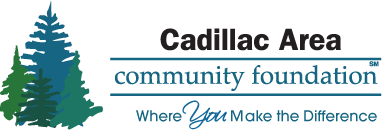August 2019
Becoming a Healthy Community – Changing Culture!
Recently, I participated in a Strategic Planning Session to reduce substance abuse in the Cadillac Area. Opioids, methadone, heroin, and student vaping were the topics. Session participants included personnel from many fields including medical and mental health, law enforcement, judicial, governmental, social services, nonprofit organizations, ministerial, educational, as well as local Jr. High and high school students. Participants were able to coalesce concerns into one short term goal and multiple long term goals. In the short term, the goal is to educate our community about proper drug disposal, the dangers of crystal methamphetamine (meth) and heroin, and educating students about the inherent dangers of vaping. Long term goals are to reduce the availability of illegal drugs, reduce prescription drug abuse, increase access to Narcotics Anonymous (NA) and Alcoholic Anonymous (AA) support groups, and add additional work re-entry programs for drug offenders.
At the Rural Michigan Opioid Summit I learned that opioid overdoses have skyrocketed since the late 1990s, becoming the worst drug epidemic in modern American history. In 2017 more than 47,000 Americans died as a result of an opioid overdose; including heroin, and illicitly manufactured fentanyl, a powerful synthetic opioid. That same year, an estimated 1.7 million people in the United States suffered from substance use disorders related to abuse of prescription opioid pain relievers, and 652,000 suffered from a heroin use disorder. The Midwestern United States region saw opioid overdoses increase 70 percent from July 2016 through September 2017, and in 2018 a study by WalletHub found that Michigan ranks 4th in the country for highest drug use. The numbers for 2019 are rising at an alarming rate. The Traverse Narcotics Team (TNT) reports that Wexford County ranked #1 in 2018 for drug activity and arrests for their eight (8) county service area, and meth occupied the greatest portion of the investigative activity.
A healthy community begins by simply educating people about healthy behaviors, with the support from our citizens and community leaders, to create community-led change. A healthier community is about being safe and living a clean life. With use of opioids, vaping, heroin, and “meth” on the rise, this isn’t an easy task. To change the culture of drug use will require the engagement of all sectors of a community—and across America these changes are happening. Communities are transforming in ways that help put better health within everyone’s reach.
For businesses, a healthier drug-free community can reduce expenses by lowering health care expenses, improving workplace morale, reduce absenteeism, and lead to a better workforce.
For schools, healthier children can focus on classroom work, are more likely to perform better on tests, and have fewer days absent.
For the community perspective, a healthier community will attract young professionals, which in turn will boost bottom lines for community businesses, increase the tax base that contributes to making city improvements and fixing roads, and increases funding available to support local schools.
The Foundation understands the greatest needs facing our community and we are at the table because healthier people are happier, more productive, more likely to generate income, and more likely to give back to their communities.
Live Clean,
Doreen


